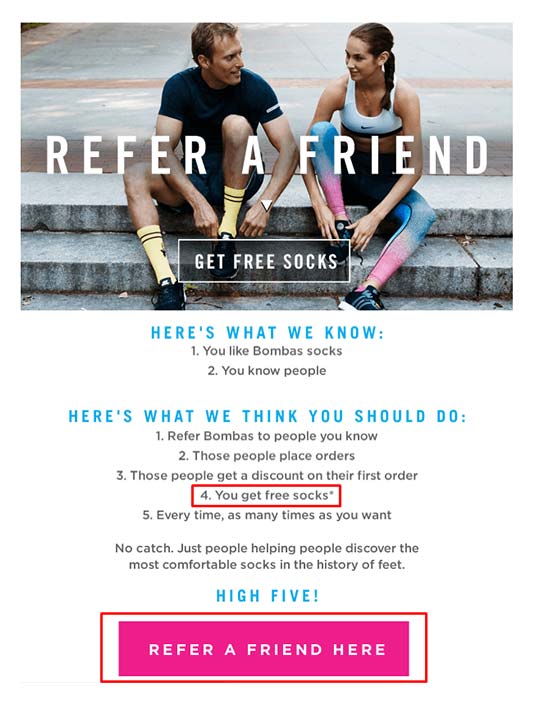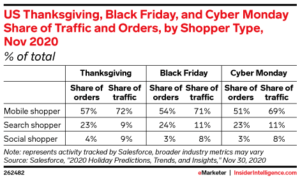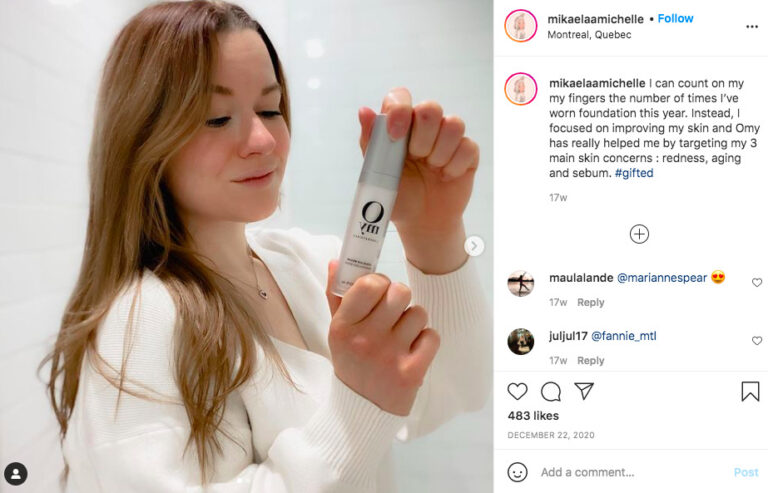
Core Vitals can be broken down into three components.
- Largest contentful paint – how quickly the largest piece of content loads
- First input delay – how quickly the page responds to user input
- Cumulative layout shift – how stable the visual elements of the page are
For each of the above metrics, a good threshold to measure is the 75th percentile of page loads, segmented across mobile and desktop devices.
Mobile friendly
With so much of the web being accessed via mobile devices, it’s imperative for Google that sites provide experiences that work just as well in the palm of your hand as it would on a desktop or laptop.
With over 3.5 billion smartphone users out there, it’s not surprising that Google is placing more emphasis on this metric than ever before. Google has indicated that this update will consider how your online-store appears on mobile.
Privacy and safe browsing
Spammy and malicious websites have long been in Google’s crosshairs. It doesn’t want users to land on a harmful website from its search results. Expect this to be one of the most dangerous things you could do as a webmaster.
But beyond malicious activity, page experience means that Google will prefer secure sites (HTTPS). SSL certification will no longer be optional if you want your eCommerce store to get results in 2021.
Start making changes now
So how do you get ahead of this update and ensure that your online store isn’t affected by these changes?
As with anything Google, they will be looking at the page level. Sure, your site’s overall ranking can be important, but remember, Google ranks pages, and it would be a surprise if this metric is applied differently.
Take a look at your page categories and use them to form an action plan. Take your products, categories, and content, and apply these tips to each one to get an idea of where you need to improve.
Speed up and reduce errors
Whether you’re a store owner or interested in content marketing and blogging, one of the most powerful things you can do to get your site looking good in the eyes of Google is to speed it up. It’s no coincidence that Google has released a whole range of tools to help you do just this.
Combine metrics such as page speed with the Chrome User Experience report to get on top of how your site performs for users.
Alongside this, make sure you are running regular audits on your site. These will help you to discover pages that aren’t running as fast and need your focus.
If speed is an area where you can focus on positive signals, make sure you also don’t ignore the negative ones. These aforementioned audit tools will also help you to identify errors. 400 errors will need to be snuffed out, for example.
There’s a whole range of related errors that we think will be included in the update. Luckily these are all common technical SEO errors that most tools can check for and help you solve. There’s never been a better time to tackle this and make your site look great in the eyes of Google.
Compare experience with main competitors
So you might have a great experience, and your experience metrics look pretty good. But what about your competitors? What are they doing that is working better than you, and how can you use this to benefit once the update is rolled out?
Take the top categories that you sell and do a simple Google search to find out where your competitor’s pages rank.
It’s time to take a long hard look at these pages and think about what it is that they are doing well. You can use an SEO tool (such as Ahrefs) to do these on the keyword level.
Identify common themes amongst your competitors. How do they categorize their products? Are their products presented in a simple and beautiful way, do they have chat support?
Sometimes looking at your competitors is the best and most humbling way to help you decide which changes you need to make on your website.
You can do this at least once a year to ensure that your site hasn’t slipped behind the best page experience in the field.
And remember, don’t just try to match these sites. Try and beat them! Aim for an even better experience than they are offering and Google will reward you in the long term.
Take the time to analyze your site layout and design
After looking externally, it’s time to look at yourself. We’ve discussed what a bad experience looks like. It’s time to make sure that you aren’t making the same mistake.
It can be tempting to try and capture customers with as many methods as possible. But these multiply quickly and the negative effect it has on-page experience compounds. We see many small businesses making these content marketing mistakes.
Try and identify the most effective ways you have of converting users that land on your site. Aside from this, try and find methods that protect the user’s experience. That might mean removing that full-page banner asking users to sign up for your newsletter.
You’ll also need to find the experience obstacles preventing your users from attaining an optimal experience on your site. The best way to do this is via a heatmap tool.






